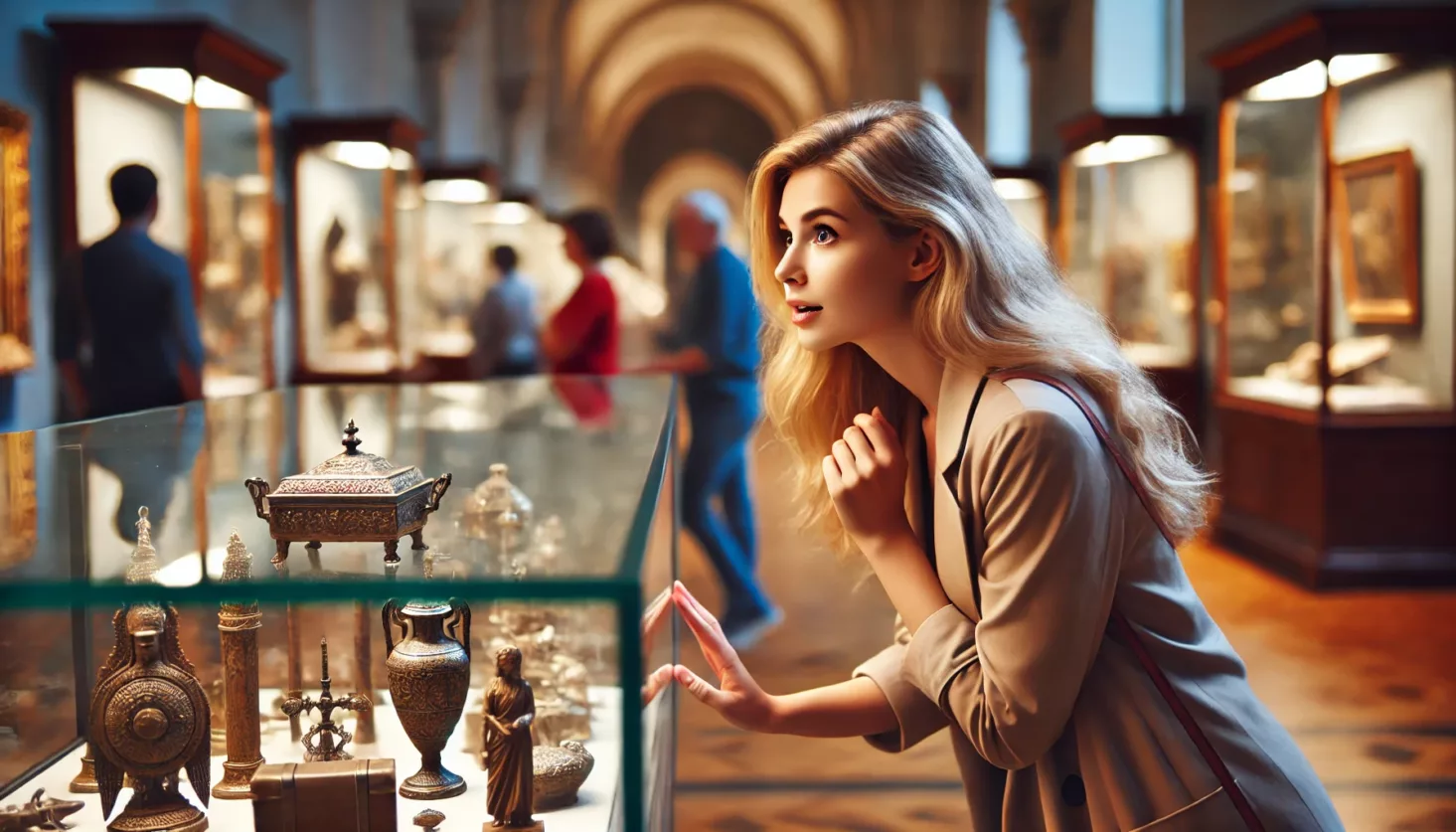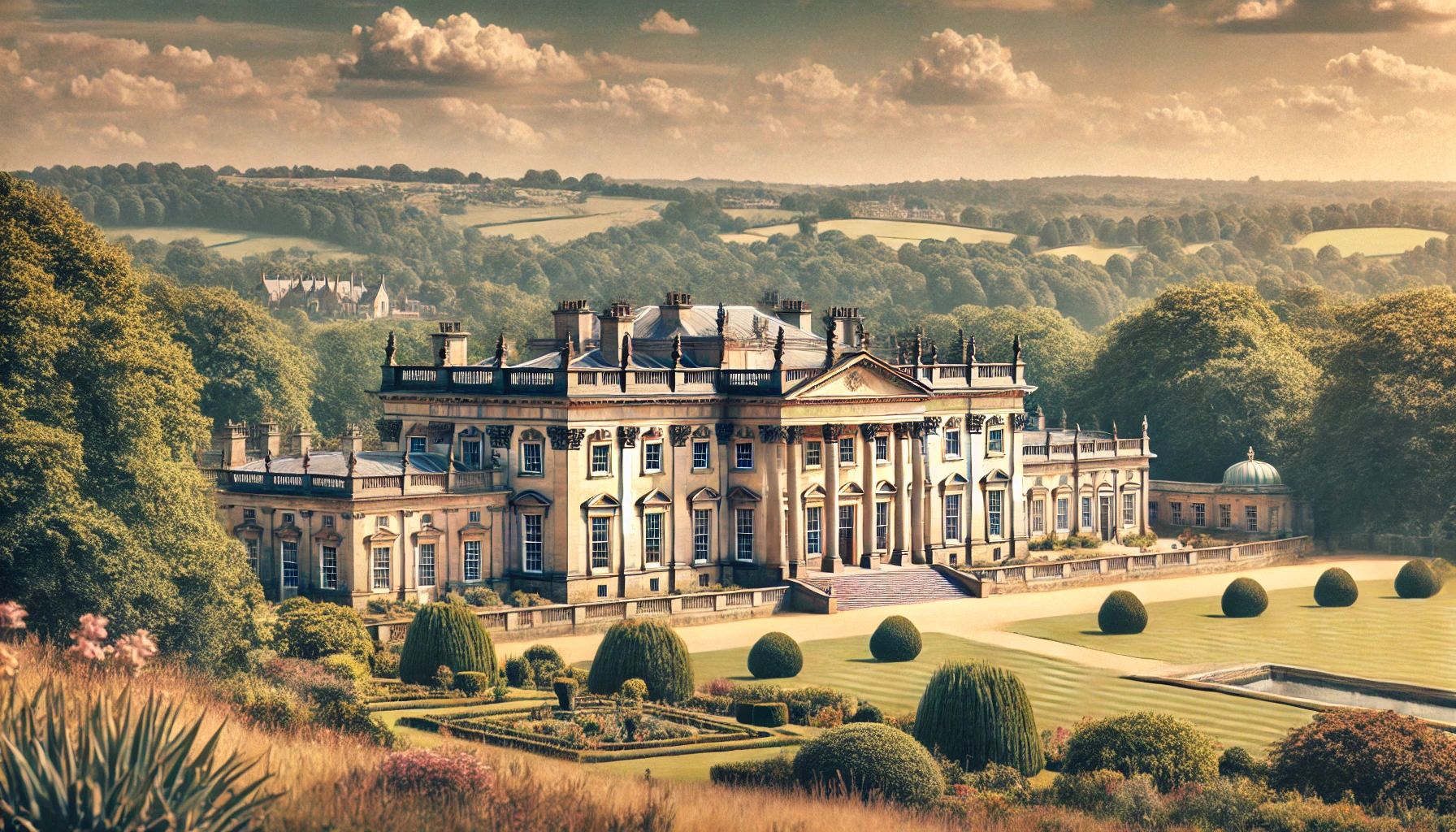
The Best Leeds Attractions for History Buffs
Leeds is a treasure trove for history lovers, offering a rich blend of cultural heritage and historic sites that transport visitors to different eras. Whether you’re fascinated by architecture, intrigued by local stories, or enjoy exploring centuries-old landmarks, Leeds has something to offer every history enthusiast. The city’s attractions highlight its industrial roots, medieval past, and vibrant role in shaping modern Britain. For those keen on discovering Leeds attractions for history buffs, this guide will uncover the must-see spots that perfectly blend education and exploration.
Begin your historical journey by visiting some of the most remarkable Leeds historic sites that are essential for any history buff. These locations provide insight into Leeds’ transformation from a textile hub to a modern metropolis. For architecture enthusiasts, the city also boasts fascinating structures, making it a hotspot for those interested in Leeds attractions for architecture lovers.
Exploring Leeds’ history isn’t limited to just buildings; the city offers captivating outdoor spaces that carry their own stories. Pair your historical exploration with a day of relaxation by visiting a park in Leeds for a relaxing day out, where you can take in the peaceful surroundings while reflecting on the city’s past. For those visiting over the weekend, there are always opportunities to incorporate history into your leisure activities, making it one of the best things to do in Leeds this weekend.
History lovers traveling with family can blend fun with learning by exploring sites that are also part of the family-friendly activities in Leeds. These spots offer interactive exhibits and open spaces where history comes alive for visitors of all ages. Additionally, after a day of exploring, you can treat yourself to some local delights at one of the Leeds farmers markets, which are often located near historic landmarks.
Leeds provides the perfect mix of history, architecture, and culture for any visitor passionate about exploring the past. Whether it’s grand buildings, ancient parks, or bustling markets with historical significance, this city is a haven for anyone with a love of history.
Leeds City Museum: A Journey Through Time

Located in the heart of Leeds, the Leeds City Museum offers an immersive journey through the history of the city and beyond. Founded in 1821, the museum is housed in an impressive building with a striking exterior that reflects its significance as one of Leeds’ most important cultural institutions. Inside, visitors can explore exhibits spanning thousands of years, from prehistoric times to the modern era.
For history buffs, the highlight of the museum is undoubtedly the “Leeds Story” gallery, which documents the city’s growth and transformation. This exhibit covers everything from the early medieval period, when Leeds was a small market town, to its pivotal role in the Industrial Revolution, where it became a powerhouse of the textile industry. Key artifacts such as Roman coins, ancient pottery, and industrial tools give visitors a tangible connection to the city’s past.
Another standout exhibit is the “Ancient Worlds” gallery, which includes an extensive collection of Egyptian mummies, Greek pottery, and Roman relics. These artifacts offer an intriguing glimpse into how ancient civilizations influenced the development of cities like Leeds. The museum’s diverse collection, along with its interactive displays and educational programs, ensures that visitors of all ages can engage with history in a meaningful way.
Whether you are interested in local history or broader global narratives, the Leeds City Museum offers a comprehensive and fascinating look into the past. Its central location and free admission make it an easy and essential stop for anyone visiting the city.
Kirkstall Abbey: A Medieval Marvel
One of the most iconic historical landmarks in Leeds is Kirkstall Abbey, a magnificent ruin that dates back to 1152. Located just a few miles from the city center, this former Cistercian monastery stands as one of the best-preserved abbeys in the UK. For history enthusiasts, a visit to Kirkstall Abbey is a chance to step back in time to the medieval era, when monks lived and worked within its walls.
Founded by Henry de Lacy, the abbey was a thriving religious community for nearly 400 years, until the dissolution of the monasteries under Henry VIII. Today, the ruins of the abbey still evoke the grandeur of its past, with the soaring arches and remnants of the church, cloister, and chapter house providing a hauntingly beautiful glimpse into monastic life. The architectural design of the abbey, with its Gothic style and detailed stone carvings, is a testament to the craftsmanship of the medieval period.
Kirkstall Abbey’s serene location along the River Aire, surrounded by parkland, makes it an ideal spot for a leisurely stroll while soaking in the historic atmosphere. The abbey grounds are open to the public, and during the summer months, they host a variety of events, including medieval reenactments, outdoor theatre performances, and educational workshops. These events bring the abbey’s history to life in a dynamic and engaging way, making it an exciting experience for visitors of all ages.
For those with a deeper interest in monastic history, the nearby Abbey House Museum offers additional context. The museum is housed in what was once the abbey’s gatehouse and provides fascinating exhibits about daily life in the abbey as well as the broader social and religious history of medieval England.
The Royal Armouries Museum: Military History on Display

For history buffs with an interest in military history, the Royal Armouries Museum in Leeds is an absolute must-visit. This museum, part of the UK’s national collection of arms and armor, offers an extensive and diverse collection of weapons, armor, and military artifacts from around the world. Spanning over 4,000 years of history, the exhibits offer visitors a detailed look into the evolution of warfare, from ancient times to the present day.
The museum is divided into thematic galleries, each focusing on different aspects of military history. The “War Gallery,” for example, provides a chronological narrative of significant battles and conflicts, with displays that include weapons used by soldiers throughout history. Visitors can explore medieval swords and armor, as well as firearms from the 19th and 20th centuries. One of the key highlights is the personal armor of King Henry VIII, which offers a rare glimpse into the opulence and power of one of England’s most famous monarchs.
For those interested in live demonstrations, the Royal Armouries offers a range of activities that bring history to life. Regular jousting tournaments, archery displays, and falconry exhibitions allow visitors to experience firsthand the skills and practices of ancient warriors. The museum’s collection also includes a vast array of non-European weaponry, such as samurai swords and Islamic armor, which broadens the scope of its military exhibits.
What makes the Royal Armouries truly unique is its interactive displays, which allow visitors to handle replicas of historical weapons and armor, gaining a deeper understanding of the craftsmanship and functionality behind them. The museum is also known for its educational programs and guided tours, which provide additional context and enrich the visitor experience. For anyone with a passion for history, the Royal Armouries Museum is a captivating and essential stop in Leeds.
Temple Newsam: A Tudor Treasure
Temple Newsam is one of the most historically significant stately homes in England, located just outside Leeds. The house, with its magnificent Tudor and Jacobean architecture, dates back to the 12th century and is set within 1,500 acres of parkland. For history lovers, a visit to Temple Newsam offers a chance to explore centuries of British history, with each room telling a different story of the past.
The house itself is a treasure trove of historical artifacts, fine art, and period furniture. Visitors can wander through more than 40 opulent rooms, each beautifully restored to reflect different periods in the estate’s history. Among its most famous residents was Lord Darnley, husband of Mary, Queen of Scots, whose connections to the infamous Gunpowder Plot add an element of intrigue to the estate’s history.
In addition to the house, the estate also includes extensive gardens that were designed by the renowned landscape architect Capability Brown. These gardens, along with the surrounding woodlands and farm, provide a peaceful and scenic setting, perfect for a leisurely afternoon walk. The estate’s rare breeds farm is also a popular attraction, offering insight into rural life during the 18th and 19th centuries.
Temple Newsam’s significance extends beyond its architecture and art. It played a pivotal role in shaping local and national history, from its involvement in the English Civil War to its association with the abolition of slavery through the estate’s former owners. A visit to Temple Newsam is not just a step back in time but also an opportunity to reflect on the broader historical forces that have shaped modern Britain.
Leeds Industrial Museum at Armley Mills: Reliving the Industrial Revolution

At the height of the Industrial Revolution, Leeds was known as one of the major centers of textile production in the world. The Leeds Industrial Museum at Armley Mills stands as a testament to this pivotal period in the city’s history. Located in what was once the largest woolen mill in the world, the museum provides a unique and comprehensive look into Leeds’ industrial past.
The museum’s exhibits focus on the textile industry, which was the backbone of Leeds’ economy during the 19th century. Visitors can see original machinery that was used to spin, weave, and dye fabrics, gaining a firsthand understanding of the processes that powered the Industrial Revolution. These massive machines, many of which are still in working order, provide an impressive display of the ingenuity and innovation that defined the era.
In addition to textiles, the museum also explores other key industries that contributed to Leeds’ growth, such as printing, engineering, and locomotive production. The museum’s collection of steam engines and locomotives highlights the critical role that transportation played in the development of the city’s industrial infrastructure.
Beyond the technical aspects of industry, the Leeds Industrial Museum at Armley Mills also offers a human perspective on the Industrial Revolution. The museum delves into the working conditions of the time, highlighting the lives of the mill workers who labored long hours in often difficult and dangerous environments. Through photographs, personal accounts, and artifacts, visitors can gain insight into the social and economic impact of industrialization on the people of Leeds.
One of the most striking features of the museum is its riverside location along the banks of the River Aire. The picturesque setting provides a stark contrast to the mill’s gritty industrial history, making it an ideal spot for visitors to pause and reflect on the changes that have shaped Leeds over the centuries. The museum frequently hosts special events, including steam demonstrations and textile workshops, where visitors can see the machines in action and even try their hand at some traditional crafts.
For history buffs, a visit to the Leeds Industrial Museum is an immersive experience that brings the story of Leeds’ industrial heritage to life. From the enormous textile machines to the stories of the workers who powered them, the museum offers a fascinating look into one of the most transformative periods in British history.
Thackray Museum of Medicine: A Fascinating Medical History
For those with a curiosity about the history of healthcare and medical advancements, the Thackray Museum of Medicine is a unique and engaging attraction in Leeds. Housed in a former Victorian workhouse, this museum tells the story of medical progress over the last 200 years, offering an intriguing glimpse into how medicine has evolved from rudimentary practices to modern science.
The museum’s exhibits are designed to immerse visitors in the medical world of the 19th century, where Leeds was undergoing rapid industrialization. As part of this experience, visitors can walk through a reconstructed Victorian street, complete with the sights, sounds, and even smells of the time. This immersive exhibit demonstrates the harsh realities of life during that period, where poverty, disease, and unsanitary conditions were rampant, contributing to high mortality rates.
One of the museum’s most striking sections explores the surgical practices of the 19th century. The exhibit showcases the rudimentary tools and techniques used by doctors before the advent of anesthesia and antiseptics. Visitors can learn about the high risks associated with surgery during this time, as well as the groundbreaking discoveries that eventually revolutionized medical care. The museum also features a section dedicated to the history of nursing, highlighting the work of Florence Nightingale and others who helped improve healthcare for the sick and wounded.
In addition to its historical displays, the Thackray Museum also focuses on more recent medical developments. Exhibits cover topics such as the discovery of antibiotics, the development of vaccines, and the technological advancements that have transformed healthcare in the 20th and 21st centuries. The museum also offers interactive exhibits where visitors can explore modern medical imaging, genetics, and surgical techniques, making it both an educational and hands-on experience.
For history buffs with an interest in medicine, the Thackray Museum provides a thorough and often eye-opening look at how far healthcare has come. From the grim realities of Victorian medicine to the lifesaving innovations of today, the museum traces the fascinating journey of medical science in a way that is both informative and deeply engaging.
Harewood House: A Stately Home with Royal Connections

Harewood House, located just a short drive from Leeds, is one of the grandest stately homes in England, boasting an impressive history and strong connections to the British royal family. Built in the 18th century for the Lascelles family, Harewood House is an architectural masterpiece designed by John Carr and Robert Adam, with gardens landscaped by Capability Brown. For history enthusiasts, a visit to Harewood House offers a glimpse into the life of the British aristocracy and the history of the estate’s role in the social and political life of the country.
Inside the house, visitors can explore grand state rooms filled with fine art, exquisite furniture, and priceless antiques. The collection includes works by renowned artists such as J.M.W. Turner and Thomas Chippendale, whose craftsmanship is evident in the house’s ornate interiors. Each room tells a story of the family’s history and its connections to the royal family, including the fact that Princess Mary, the daughter of King George V, lived here after her marriage to the 6th Earl of Harewood.
The house’s historical significance extends beyond its royal connections. It played a role during both World Wars, first as a convalescent hospital and later as a military base. The archives and exhibits at Harewood House offer insight into how the estate adapted to the challenges of war and its contributions to the national effort.
Beyond the house itself, the expansive grounds of Harewood House are a major attraction. The formal gardens, designed by Capability Brown, include stunning lakes, woodlands, and flower gardens that have been meticulously maintained over the centuries. Visitors can also enjoy the bird garden, which is home to exotic species from around the world, and explore the estate’s farm, which showcases rural life in Yorkshire.
For history lovers, Harewood House is more than just a beautiful stately home; it is a living testament to centuries of British history, culture, and heritage. Whether you’re interested in architecture, art, or the personal stories of its inhabitants, Harewood House offers a richly layered historical experience.
Abbey House Museum: Step into Victorian Leeds
Abbey House Museum is located near the ruins of Kirkstall Abbey and offers a fascinating look at what life was like in Leeds during the Victorian era. This museum recreates a Victorian street, complete with authentic shops, homes, and businesses, allowing visitors to step back in time and experience the day-to-day life of the city’s residents in the 19th century.
The street is lined with period-appropriate facades, each carefully reconstructed to reflect the style and detail of the time. Visitors can walk past a grocer’s shop, a traditional pub, and a blacksmith’s forge, all of which are filled with authentic artifacts from the era. The immersive nature of this exhibit makes it easy to imagine what life was like in Victorian Leeds, from the bustling marketplace to the quiet domestic spaces where families lived.
In addition to the street, the museum also explores themes of childhood and family life in the 19th century. Exhibits include toys, clothing, and educational materials that provide insight into how children were raised and educated during this period. The museum also addresses the broader social changes that were occurring in Victorian Leeds, including the impact of industrialization, urbanization, and new social reforms.
Abbey House Museum is a perfect complement to a visit to Kirkstall Abbey, as it offers a more intimate and detailed look at everyday life in Leeds during the Victorian era. Whether you’re interested in social history, architecture, or simply want to experience the atmosphere of a bygone time, Abbey House Museum provides a deeply engaging and informative experience for all ages.
Uncover the Rich History of Leeds: A Must-Visit Destination for History Buffs

Leeds offers an incredible array of historical attractions that will captivate any history buff. From ancient ruins to industrial heritage, the city’s rich past is preserved in its diverse landmarks and museums. Whether you are fascinated by the Roman foundations at Temple Newsam or inspired by the Victorian grandeur of Leeds Town Hall, every corner of Leeds tells a unique story.
Exploring historical sites like the Royal Armouries Museum or Kirkstall Abbey is more than just a walk through time—it’s an immersive experience that reveals the city’s significance through the centuries. Leeds’ evolution from a medieval market town to a powerhouse of the Industrial Revolution is reflected in its architectural gems, including the Corn Exchange and the Leeds Industrial Museum at Armley Mills.
These sites allow history lovers to not only learn about the city’s past but also understand the broader historical events that shaped the UK and the world. For those interested in social history, the Thackray Medical Museum offers a glimpse into the medical advancements and challenges of the 19th century, making it another essential stop on your historical journey through Leeds.
Whether you’re planning a day trip or an extended stay, Leeds’ historical attractions will leave you with a deeper appreciation for the city’s role in shaping the cultural and industrial landscape of Britain. It’s not just about admiring old buildings; it’s about connecting with the stories and people that made Leeds what it is today.
So, the next time you’re planning a visit, take the time to explore the history that lies beneath the vibrant, modern exterior of Leeds. With so much to discover, every history buff will find themselves immersed in the tales of the past while enjoying the present. From medieval relics to industrial masterpieces, Leeds is truly a historian’s dream come true.





